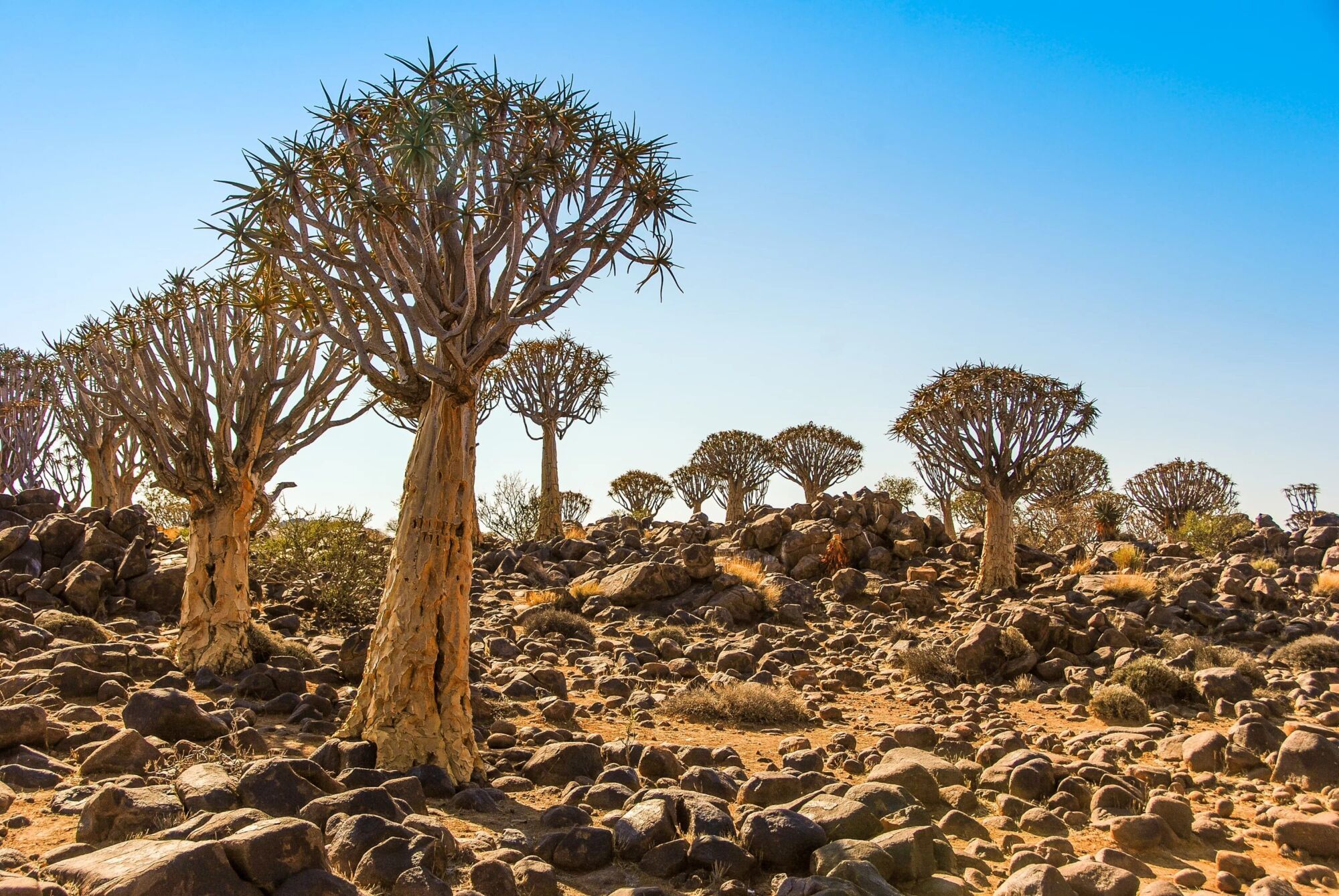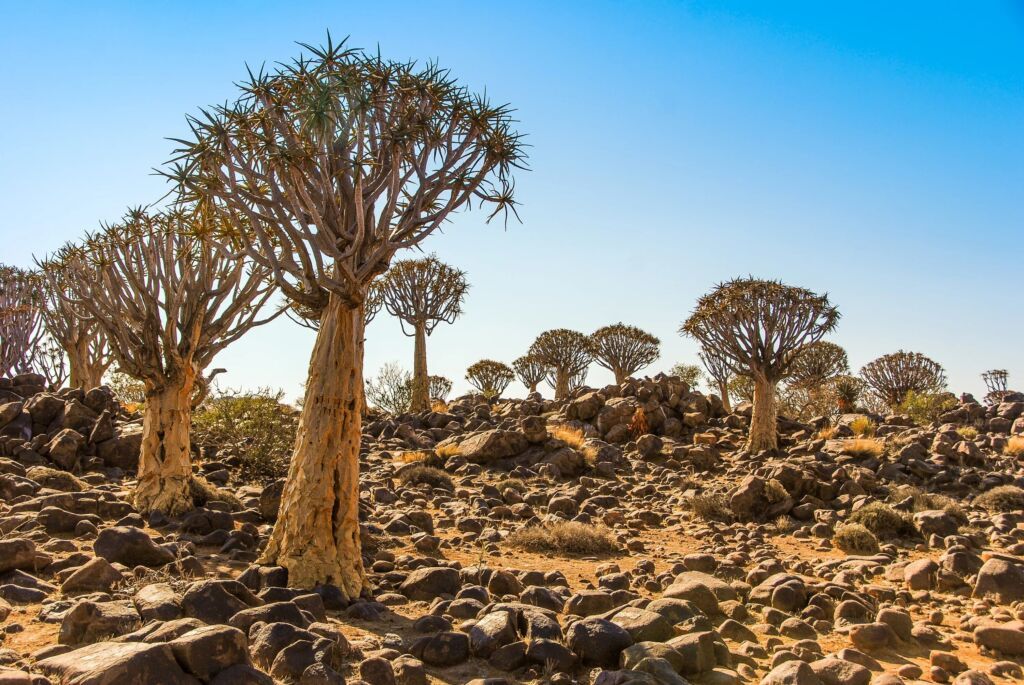Страна:
Регион:
Значение:
Время визита:
Описание:
Despite its name, the Quiver Tree (Aloidendron dichotomum) is not a true tree, but rather a species of aloe that can grow over 30 feet tall. Declared a National Monument of Namibia on June 1, 1995, the Quiver Tree Forest has been privately owned by Cooney and Ingrid Nolte since 1990.
All of the trees in the forest are naturally occurring and self-propagating. You will find young trees growing out of rock crevices, and the oldest trees in the forest are estimated to be between 200 and 300 years old.
The plants are as culturally important as they are fascinating to look at. They are considered a national symbol of Namibia and are featured on currency and in popular imagery. Traditional medicine uses the roots of the plant to treat both asthma and tuberculosis. The quiver tree gets its name from the Afrikaans name, Kokerboom, which is a reference to the indigenous San people’s practice of hollowing out tubular branches to make quivers for their arrows.
The trees are also scientifically interesting. Their bark is coated in a white powdery substance that is used to reflect much of the sun’s heat. The plants are also capable of a rare botanical practice known as autoamputation, which allows them to shed diseased limbs to prevent the sudden spread of infections, and to remove excess limbs during droughts.
Категории:
Зачем посещать:
Интерес:
Физподготовка:
Лучшее время:
Доступ:
Roads:
Emergency:
112
Info:
Safety:
Safely
Clothing:
Seasonable
Connection:
Ok
- Normandy
- Moab
- Turkmenistan
- Чаепитие в 5‑звездочном отеле Mount Nelson в Кейптауне
- Bosphorus
- Indians
- Colombia
- Morocco
- Uzbekistan
- Cod Wars
- Great lakes
- Weekend in Moab: Arches, Canyons, and the Spirit of Adventure
- Great Plains (USA)
- Mammoths and travel: where to see habitats, traces and digs, and museums
- Scythians
- Arabat Spit
- 9 Reasons Why People Love to Travel to Other Countries
- Tourism in Nigeria: Challenges, Growth, and the Path to Regional Leadership
- Apple в туризме: как бренд стал достопримечательностью
- Kamchatka

 United States
United States
